Solutions
Horse Construction offers full range of structural strengthening materials with technical supports, documentation supports, products supports, project supports.
Carbon Fiber
Concrete infrastructure, as a vital support for modern society, is widely used in construction, bridges, roads, water conservancy, and other fields, playing a crucial role in socio-economic development. From towering skyscrapers to bridges spanning rivers, lakes, and seas, and underground utility tunnels ensuring urban operation, concrete, with its advantages of low cost, high plasticity, and good durability, has become an indispensable material in infrastructure construction.
However, concrete structures inevitably suffer from various factors during long-term use, such as environmental erosion, load-bearing effects, and material aging, leading to gradual deterioration of structural performance, cracking, and reduced strength, threatening the structure's safety and durability. According to statistics, many early-built concrete bridges have developed serious structural defects due to long-term traffic loads and environmental erosion, requiring frequent maintenance and reinforcement. Some bridges have even had to be decommissioned prematurely due to severe damage, causing significant economic losses and social impact. Therefore, how to effectively maintain and reinforce concrete infrastructure to ensure its long-term safe and reliable operation has become a critical issue that urgently needs to be addressed in the field of civil engineering.
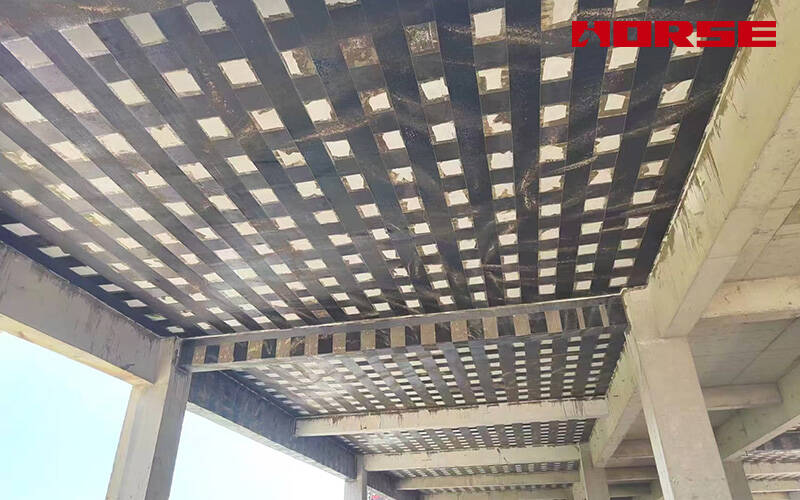
Carbon fiber reinforcement systems, as a novel structural strengthening technology, have demonstrated enormous potential and advantages in the field of concrete infrastructure reinforcement due to their superior performance. Carbon fiber materials possess a series of excellent properties, including high strength, high modulus, low density, corrosion resistance, and fatigue resistance. Applying them to concrete structure reinforcement can significantly improve the load-bearing capacity, stiffness, and durability of the structure, effectively repairing and improving its performance and extending its service life. In recent years, carbon fiber reinforcement systems have been widely used in numerous concrete infrastructure reinforcement projects both domestically and internationally, achieving excellent results.
Carbon Fiber Reinforced System Working Principle
The working principle of carbon fiber reinforced concrete structures is based on the synergistic working mechanism of composite materials. When carbon fiber is bonded to the surface of a concrete structure using an adhesive, under external loads, stress is transferred between the carbon fiber and concrete through the adhesive, forming a unified load-bearing system. Because carbon fiber has extremely high tensile strength and modulus, it can bear most of the tensile stress, effectively compensating for the low tensile strength of concrete. Specifically, when a concrete structure is subjected to tensile, bending, or shear loads, the concrete first deforms and cracks. As the load increases, the cracks gradually propagate. At this point, the carbon fiber cloth or carbon fiber plate bonded to the concrete surface can restrain the further development of cracks. Through the adhesive, part of the load borne by the concrete is transferred to the carbon fiber, which then bears the tensile force, thereby improving the overall load-bearing capacity and stiffness of the structure. This synergistic working mechanism fully utilizes the advantages of both carbon fiber and concrete, achieving an effective improvement in the performance of the concrete structure.
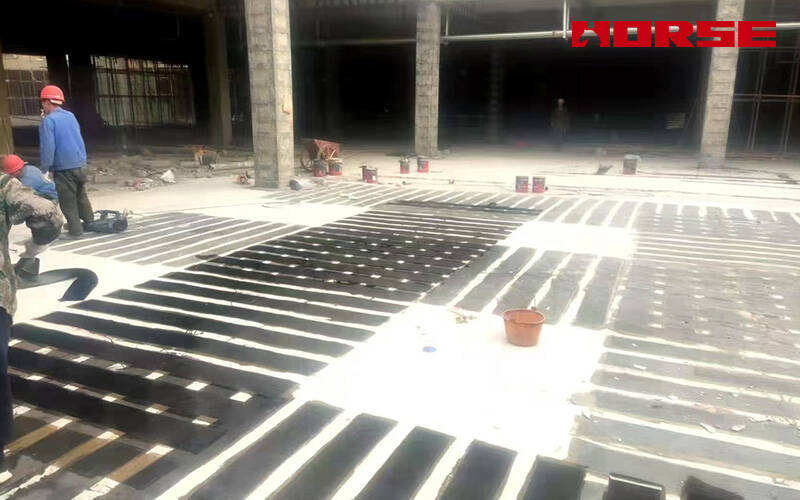
Advantages in Concrete Infrastructure
Enhanced Mechanical Properties
Carbon fiber reinforced systems excel in improving the mechanical properties of concrete structures, significantly increasing their tensile, flexural, and shear strengths, effectively reducing crack propagation, and thus extending the service life of the structure.

1) Increased Tensile Strength: Concrete has relatively low tensile strength, making it a weak point in its structural performance. When concrete structures are subjected to tensile forces, cracks easily form, and as these cracks develop, they severely impact the structure's safety and durability. Carbon fiber materials have extremely high tensile strength. Bonding carbon fiber cloth or sheets to the tension areas of concrete structures allows them to work in tandem with the concrete to share the tensile load. In the reinforcement of reinforced concrete beams, bonding carbon fiber cloth to the tension zone at the bottom of the beam allows the carbon fiber cloth to fully utilize its high strength to bear most of the tensile stress when the beam is under tensile force, effectively preventing the generation and development of concrete cracks, thereby significantly increasing the beam's tensile strength. Studies have shown that the tensile strength of concrete beams reinforced with carbon fiber systems can increase by 30%–80%, with the specific increase depending on factors such as the amount of carbon fiber used, the bonding method, and the original state of the concrete structure.
2) Enhanced Bending Resistance: In concrete structures such as beams and slabs, bending resistance is a crucial indicator of their load-bearing capacity. Carbon fiber reinforcement systems increase the area of tensile reinforcement in concrete members by bonding carbon fiber material to the tension zone, thereby improving the bending resistance. For example, a simply supported reinforced concrete beam exhibited significant cracks and deformation under load before reinforcement. After bending reinforcement with carbon fiber fabric, the crack width decreased significantly under the same load, deformation was effectively controlled, and the bending load-bearing capacity increased by approximately 50%, meeting higher performance requirements. This is because the carbon fiber fabric and concrete form a unified structure through bonding materials. Under bending moment, the carbon fiber fabric can withstand greater tensile stress, working together with the compression zone of the concrete to resist the bending moment, thus enhancing the beam's bending resistance.
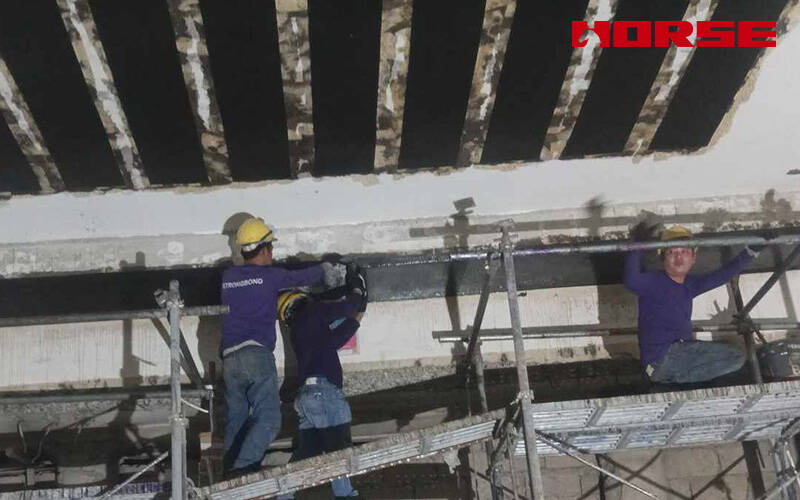
3) Improved Shear Resistance: Shear resistance is equally crucial for beams, columns, and other components in concrete structures. Carbon fiber reinforcement systems can improve the shear capacity of components by attaching U-shaped carbon fiber hoops or carbon fiber fabric to the surface of the component. The U-shaped carbon fiber hoops effectively confine the concrete, enhancing its shear strength. Simultaneously, the bond between the carbon fiber fabric and the concrete transfers some of the shear force, thus improving the overall shear resistance of the component. In practical engineering, for some reinforced concrete beams exhibiting diagonal cracks due to insufficient shear capacity, the reinforcement method using U-shaped carbon fiber hoops and carbon fiber fabric significantly improved the beam's shear bearing capacity, effectively suppressed the development of diagonal cracks, and ensured the safety and reliability of the structure.
4) Crack Control and Structural Lifespan Extension: Concrete structures are prone to cracking during long-term use due to factors such as loads and environmental conditions. The presence of cracks not only affects the structure's appearance but also reduces its durability and accelerates its deterioration. Carbon fiber reinforcement systems can effectively control crack propagation by restraining concrete deformation, reducing crack width, and improving the structure's waterproofing and seepage prevention performance, thereby extending its service life. For example, in some concrete bridges located in harsh environments, the use of carbon fiber reinforcement systems has effectively controlled cracking, significantly improved structural durability, and extended the expected service life by 20-30 years, reducing the economic losses and social impact of frequent maintenance and replacement.
Enhanced Durability
Carbon fiber reinforced systems possess excellent corrosion resistance and acid and alkali resistance, making them crucial in protecting concrete infrastructure from harsh environmental erosion. They can significantly improve structural durability, reduce maintenance costs, and are particularly suitable for infrastructure in special environments.
1) Corrosion Resistance Principle: Carbon fiber itself is a chemically very stable material. Its main component is carbon, which has a highly crystalline structure. This structure makes carbon fiber exhibit good inertness in chemical media and it is not easily chemically reacted with substances such as acids, alkalis, and salts. At the same time, the epoxy resin adhesive used to bond the carbon fiber also has excellent chemical corrosion resistance, effectively isolating the carbon fiber and concrete structure from external corrosive media, forming a strong protective barrier. When a carbon fiber reinforcement system is bonded to the surface of a concrete structure, even if corrosive substances are present in the external environment, such as sulfur dioxide and nitrogen oxides in industrial waste gas, chloride ions in seawater, and acidic or alkaline substances in the soil, these corrosive media are difficult to penetrate into the concrete, thus protecting the concrete and internal steel reinforcement from corrosion.
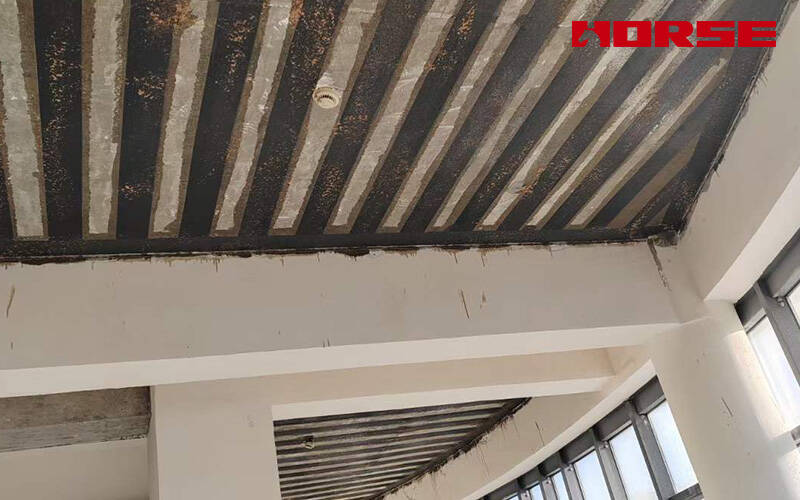
2) Advantages in Special Environments: In coastal areas, numerous bridges, docks, and other infrastructure are subjected to long-term immersion in seawater and erosion by sea winds. The chloride ions in seawater severely corrode the steel reinforcement in concrete structures, causing the steel to rust and expand, leading to cracking and spalling of the concrete and a sharp decline in structural performance. After reinforcement with a carbon fiber reinforcement system, the corrosion resistance of carbon fiber effectively resists chloride ion erosion, protecting the steel reinforcement from corrosion and extending the service life of the structure. For example, after many years of use, a coastal bridge developed severe corrosion on its piers and deck. After reinforcement with carbon fiber cloth and carbon fiber plates, and following years of monitoring, the structure remained in good condition with no new corrosion problems, effectively ensuring the safe operation of the bridge.
Convenience of construction
1) Simple construction process
2) No large equipment required
3) Short construction period
4) Minimal environmental impact
5) Does not affect the original structural appearance or usable space

You can find anything here you are in need of, have a trust trying on these products, you will find the big difference after that.

High strength, unidirectional carbon fiber wrap pre-saturated to form a carbon fiber reinforced polymer (CFRP) wrap used to strengthen structural concrete elements.
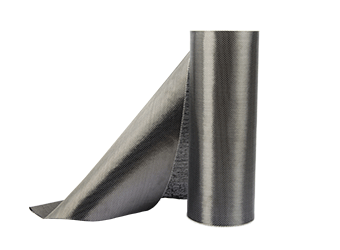
High strength, unidirectional carbon fiber fabric pre-saturated to form a carbon fiber reinforced polymer (CFRP) fabric used to strengthen structural concrete elements.
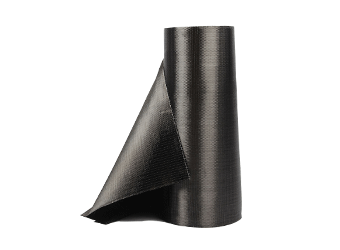
High strength, unidirectional carbon fiber sheet pre-saturated to form a carbon fiber reinforced polymer (CFRP) sheet used to strengthen structural concrete elements.